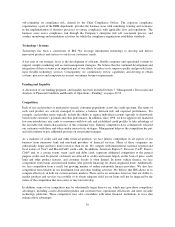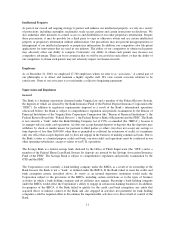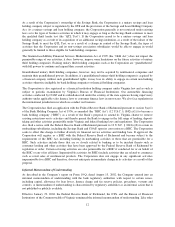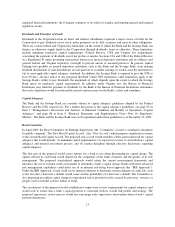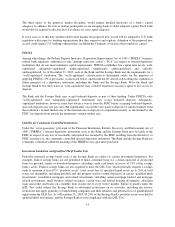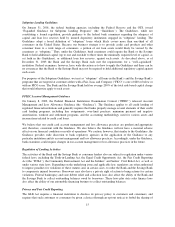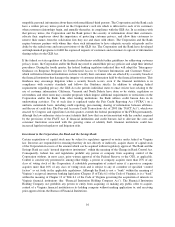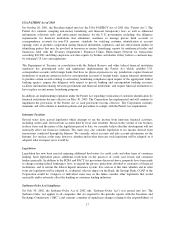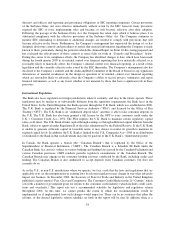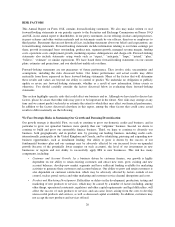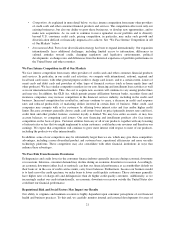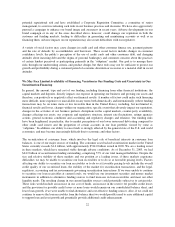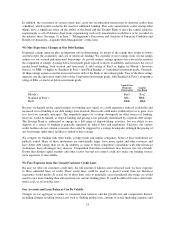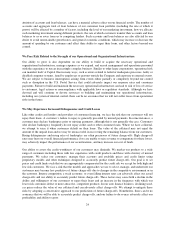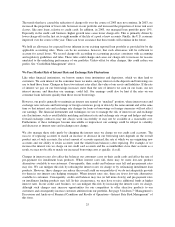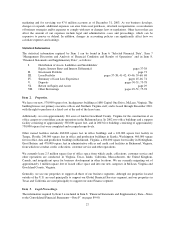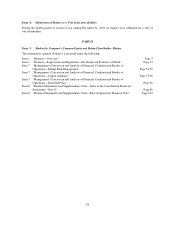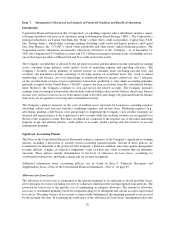Capital One 2003 Annual Report Download - page 38
Download and view the complete annual report
Please find page 38 of the 2003 Capital One annual report below. You can navigate through the pages in the report by either clicking on the pages listed below, or by using the keyword search tool below to find specific information within the annual report.RISK FACTORS
This Annual Report on Form 10-K contains forward-looking statements. We also may make written or oral
forward-looking statements in our periodic reports to the Securities and Exchange Commission on Forms 10-Q
and 8-K, in our annual report to shareholders, in our proxy statements, in our offering circulars and prospectuses,
in press releases and other written materials and in statements made by our officers, directors or employees to
third parties. Statements that are not historical facts, including statements about our beliefs and expectations, are
forward-looking statements. Forward-looking statements include information relating to our future earnings per
share, growth in managed loans outstanding, product mix, segment growth, managed revenue margin, funding
costs, operations costs, employment growth, marketing expense, delinquencies and charge-offs. Forward-looking
statements also include statements using words such as “expect,” “anticipate,” “hope,” “intend,” “plan,”
“believe,” “estimate” or similar expressions. We have based these forward-looking statements on our current
plans, estimates and projections, and you should not unduly rely on them.
Forward-looking statements are not guarantees of future performance. They involve risks, uncertainties and
assumptions, including the risks discussed below. Our future performance and actual results may differ
materially from those expressed in these forward-looking statements. Many of the factors that will determine
these results and values are beyond our ability to control or predict. We undertake no obligation to publicly
update or revise any forward-looking statements, whether as a result of new information, future events or
otherwise. You should carefully consider the factors discussed below in evaluating these forward-looking
statements.
This section highlights specific risks that could affect our business and us. Although we have tried to discuss key
factors, please be aware that other risks may prove to be important in the future. New risks may emerge at any
time and we cannot predict such risks or estimate the extent to which they may affect our financial performance.
In addition to the factors discussed elsewhere in this report, among the other factors that could cause actual
results to differ materially are the following:
We Face Strategic Risks in Sustaining Our Growth and Pursuing Diversification
Our growth strategy is threefold. First, we seek to continue to grow our domestic credit card business, and in
particular to grow our upmarket business more quickly than our “subprime” business. Second, we desire to
continue to build and grow our automobile finance business. Third, we hope to continue to diversify our
business, both geographically and in product mix, by growing our lending business, including credit cards,
internationally, principally in the United Kingdom and Canada, and by identifying, pursuing and expanding new
business opportunities, such as installment lending. Our ability to grow is driven by the success of our
fundamental business plan and our earnings may be adversely affected by our increased focus on upmarket
growth (because of the potentially lower margins on such accounts), the level of our investments in new
businesses or regions and our ability to successfully apply IBS to new businesses. This risk has many
components, including:
•Customer and Account Growth. As a business driven by customer finance, our growth is highly
dependent on our ability to retain existing customers and attract new ones, grow existing and new
account balances, develop new market segments and have sufficient funding available for marketing
activities to generate these customers and account balances. Our ability to grow and retain customers is
also dependent on customer satisfaction, which may be adversely affected by factors outside of our
control, such as postal service and other marketing and customer service channel disruptions and costs.
•Product and Marketing Development. Difficulties or delays in the development, production, testing and
marketing of new products or services, which may be caused by a number of factors including, among
other things, operational constraints, regulatory and other capital requirements and legal difficulties, will
affect the success of such products or services and can cause losses arising from the costs to develop
unsuccessful products and services, as well as decreased capital availability. In addition, customers may
not accept the new products and services offered.
20


